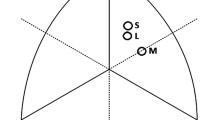Abstract
Tests have been completed on 10 men and 2 women, all aspirant members of the Canadian national white-water team. Objective scores account for some 75% of the variation in ability noted by the team coach, and can provide (i) a useful counterweight to errors of judgement by the coach, and (ii) indications for an individualized training programme. The successful white-water paddler is characterized by many years of experience, a substantial standing height and lean body mass, good general muscle development with particular emphasis on the leg muscles, a good but not outstanding aerobic power, an above-average vital capacity, and tolerance of a large oxygen debt; control of body fat does not seem particularly vital to success. The maximum heart rate and the parameters of the recovery curve seem as in the normal population; however, a single Astrand nomogram prediction does not provide adequate information on the aerobic power of the individual athlete.
Similar content being viewed by others
References
Anderson, T. W., Brown, J. R., Hall, J. W., Shephard, R. J.: The limitations of linear regressions for the prediction of vital capacity and forced expiratory volume. Respiration 25, 140–158 (1968)
Asmussen, E., Heeboll-Nielsen, K., Molbech, S.: Muscle strength in children. In: International Research in Sport and Physical Education, Jokl, E., Simon, E., Eds. Springfield, Illinois: C. C. Thomas 1964
Astrand, I.: Aerobic work capacity in men and women with special reference to age. Acta physiol. scand. 49, Supp. 169 (1960)
Clarke, H. H.: Muscle strength and endurance in man. Englewood Cliffs, N.J.: Prentice Hall 1966
Cumming, G. R.: Fitness testing athletes. Canad. Fam. Physician (August), 48–52 (1970)
Davies, C. T. M.: Commentary. Canad. med. Ass. J. 96, 743 (1967)
Durnin, J. V. G. A., Ramahan, M. M.: The assessment of the amount of fat in the human body from measurements of skinfold thickness. Brit. J. Nutr. 21, 681–689 (1967)
Howell, M. L., Loiselle, D. S., Lucas, W. G.: Strength of Edmonton School-children. Unpublished report, Fitness Research Unit, University of Alberta, Edmonton, Alberta
Howell, N., Howell, M. L.: Sports and games in Canadian Life. 1700 to the present. Toronto: MacMillan 1969
Ishiko, T.: Aerobic capacity and external criteria of performance. Canad. med. Ass. J. 96, 746–749 (1967)
Miller, W. F., Johnson, R. L., Wu, N.: Relationships between fast vital capacity and various timed expiratory capacities. J. appl. Physiol. 14, 157–163 (1959)
Mohme-Lundholm, E., Svedmyr, N., Vamos, N.: Enzymatic micromethod for determining the lactic acid content of fingertip blood. Scand. J. clin. Lab. Invest. 17, 501–502 (1965)
Saltin, B., Astrand, P. O.: Maximal oxygen uptake in athletes. J. appl. Physiol. 23, 353–358 (1967)
Seliger, V.: Circulatory responses to sports activities. In: Physical activity in health and disease, Evang, K., Andersen, K. L., Eds. Springfield, Illinois: C. C. Thomas 1966
Shephard, R. J.: A nomogram to calculate the oxygen cost of running at slow speeds. J. Sport Med. (Torino) 9, 10–16 (1969)
Shephard, R. J.: Computer programmes for solution of the Astrand nomogram. J. Sport Med. (Torino) 10, 206–210 (1970)
Shephard, R. J., Allen, C., Benade, A. J. S., Davies, C. T. M., di Prampero, P. E., Hedman, R., Merriman, J. E., Myhre, K., Simmons, R.: The maximum oxygen intake — an international reference standard of cardio-respiratory fitness. Bull. Wld Hlth Org. 38, 757–764 (1968)
Ibid.: Standardization of sub-maximal exercise tests. Bull. Wld Hlth Org. 38, 765–776 (1968)
Society of Actuaries: Build and Blood pressure study. Chicago, Illinois: 1959
Weiner, J. S., Lourie, J. A.: Human biology: A guide to field methods. Oxford: Blackwell 1969
Wohlfeil, T.: über den Energieverbrauch bei sportlicher Körperarbeit (Kanufahren). Arch. Hyg. (Berl.) 100, 393–411 (1928)
Yuhasz, M.: Physical Fitness and Sports Appraisal Laboratory Manual. London, Ont.: Dept. of Physical Education, University of Western Ontario 1970
Author information
Authors and Affiliations
Rights and permissions
About this article
Cite this article
Sidney, K., Shephard, R.J. Physiological characteristics and performance of the white-water paddler. Europ. J. Appl. Physiol. 32, 55–70 (1973). https://doi.org/10.1007/BF00422428
Received:
Issue Date:
DOI: https://doi.org/10.1007/BF00422428




